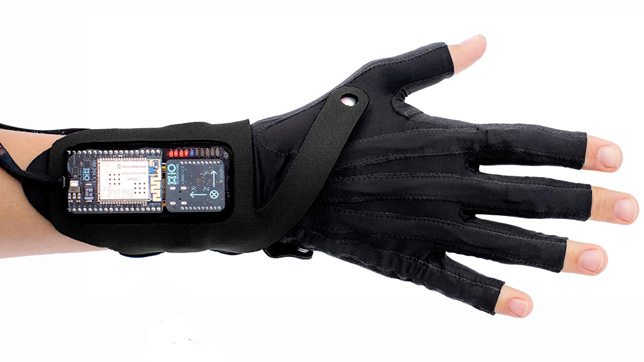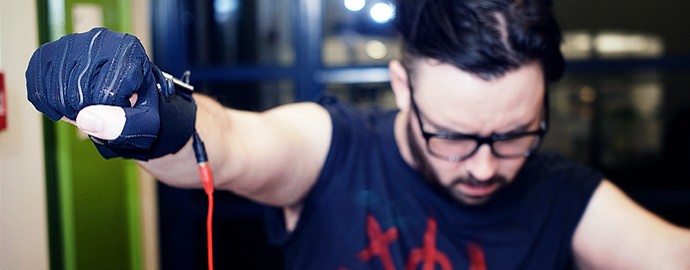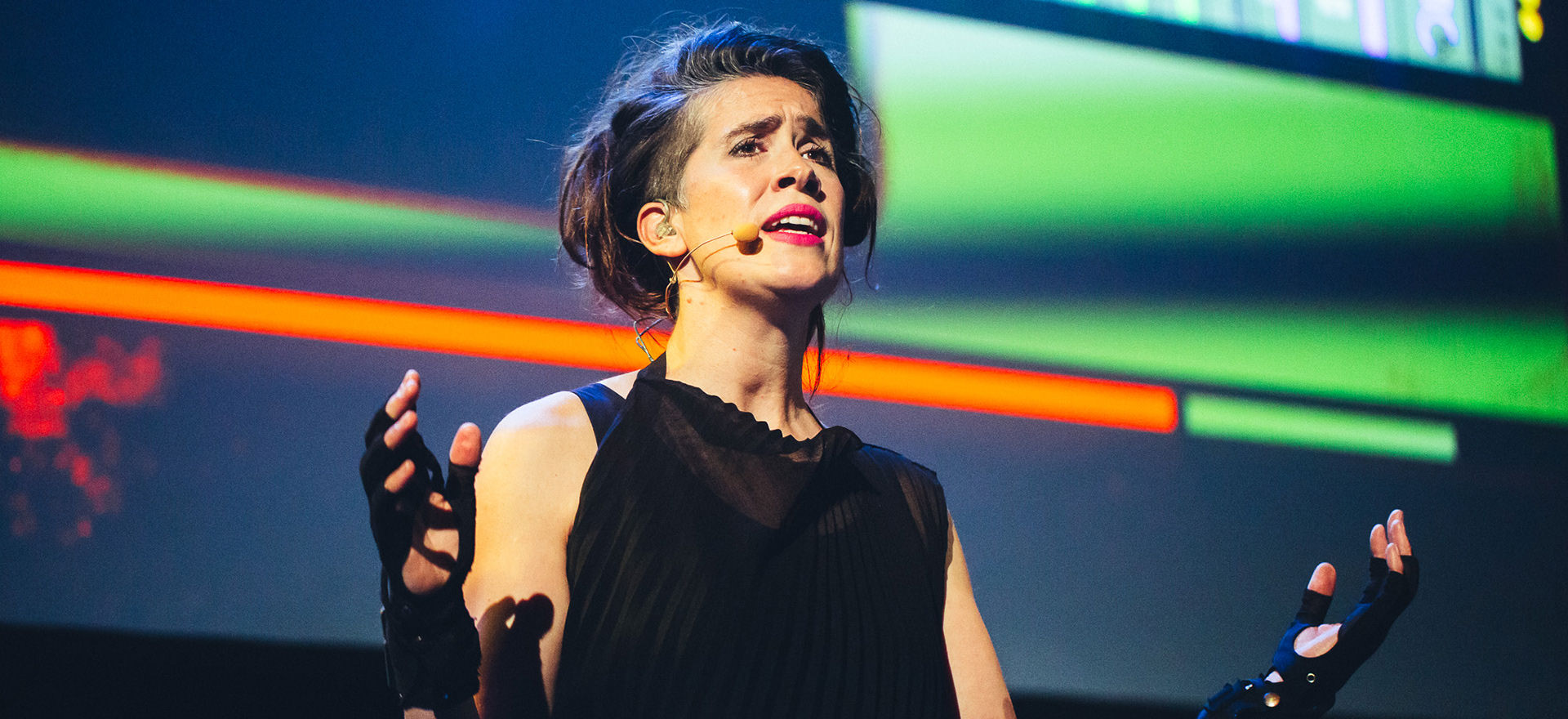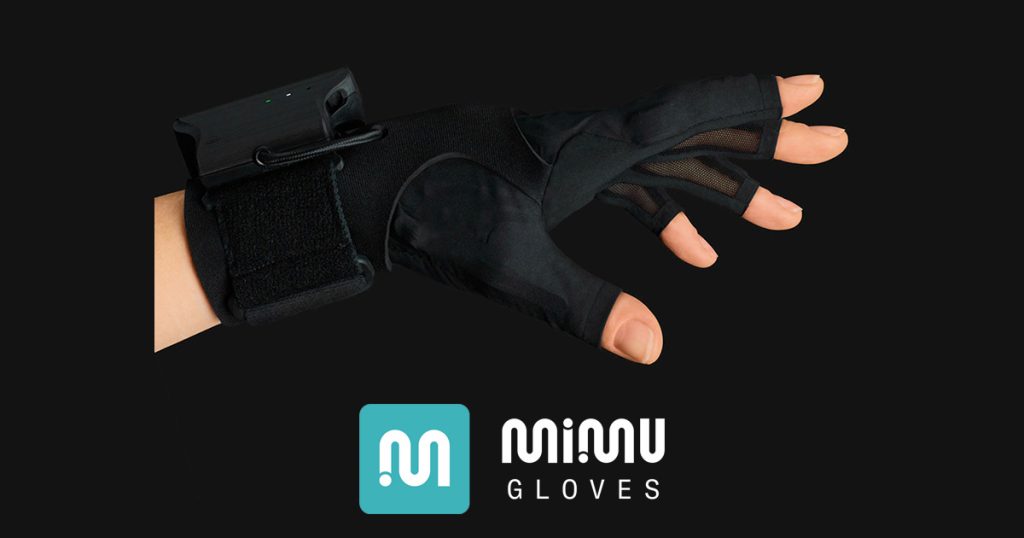What Are They?
In 2010, UK-based musician, Imogen Heap collaborated up with the team at MiMu to build something that would allow her to create electronic music on stage in a more exciting and dynamic way than simply turning dials on a switchboard. Through trial and error in Heap’s recording studio, the MiMu Gloves were born.
Utilizing spatial sensors in the fabric of the gloves and on the cuff of the wrist, wearers can map sounds and instruments to specific gestures and movements. For musicians with disabilities that can affect their ability to play instruments, MiMu’s gloves widen the range of access to music making by linking those instruments to gestures.

How Do They Work?
Designed as a fingerless glove, MiMu’s wearable instrument utilizes flex sensors woven into the fabric of the fingers to identify bend in the knuckles, an inertial measurement unit to detect wrist and arm motion, and communicates with a CPU over WiFi. A proprietary software – called Glover – interprets the data from the sensors to be readable by third party software as MIDI and OSC, which are common music software data formats. There are also multiple points of feedback, both haptic and visual in the form of a vibrational component and an LED light; essential for musicians with low vision or hearing impairments.

Although the gloves come pre-calibrated for movement, they are also customizable for the individual wearer. This is especially important for people with disabilities that affect their fine motor skills. Each directional input is also programmable and is relative to the person wearing the gloves. Without getting into the nitty gritty of the programming, these devices are completely customizable to the wearer. Functionally speaking, the gloves directly address a need that exists for musicians with disabilities that face barriers to using traditional instruments.
Who Uses Them?
While MiMu and Imogen Heap did not design these gloves with accessibility in mind, musicians like Kris Halpin have demonstrated their usability by people with disabilities. Halpin was formally diagnosed with FNP (functional neurological disorder) in 2021, but has been living with cerebral palsy all his life. He has recounted experiences that highlight the ways that the medical model of disability has kept him from participating in the world as a musician. The onus has been placed on Halpin to change, rather than on the institutions he was part of to find solutions to support his interests, as would align with the social model. Shows were held in basements he could not access, school instructors barred him from participating in classes because of his limited dexterity, and general attitudes towards his career aspirations were dismissive.

From the viewpoint of the social model, the gloves are an embodiment of its values. This piece of technology was created to learn the musician’s body, and could therefore be adapted for anyone; disabled musicians who use the gloves are not expected to use them the same way that abled people might, which has long been the case in the music industry. The catch, however, is their price tag. At a cool £5,000, MiMu’s gloves are wildly inaccessible to folks whose financial situations might already be hindered by a world that keeps capital from disabled folks. Kris Halpin was able to work with Drake Music, a UK-based arts charity dedicated to the support of disabled musicians, to obtain the gloves. Needless to say this is a rare opportunity: affordability is a major barrier for this technology.

Looking Ahead
MiMu’s gloves demonstrate the need for more diverse form factors in the technological landscape. In adopting a social model of disability in UX, we might be able to better tailor solutions for disabled folks rather than rely on the happy accidents of developers and the ingenuity the disabled community. While the gloves will not work for everyone, the technology it utilizes has the potential to expand in more inclusive directions.
